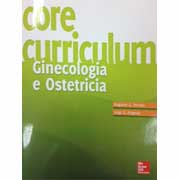247. PELVIC EXENTERATION IS STILL AN OPPORTUNITY FOR SURVIVAL IN RECURRENT CERVICAL AND VAGINAL CANCER
L. Frigerio, A. Gallo, V. Bergamini, S. Giudici, G. Trezzi and M. Franchi
Int J Gynecol Cancer 2007, 17, 937–948
Exenteration refers to an ultraradical surgical procedure consisting
of an en bloc resection of the female reproductive organs, lower urinary
tract and a portion of the rectosigmoid. Although rarely performed,
it may be offered as a last hope of cure to women with recurrent or advanced gynecologic cancer with extensive pelvic disease that cannot be resected with a lesser procedure, and in whom radiation is not an option. Objective: To retrospectively assess the role and the type of pelvic exenteration to treat recurrent or persistence cervical and vaginal cancer. Methods: A chart review was conducted on patients who underwent pelvic exenteration for recurrent cervical and vaginal cancer in Bergamo Hospital from May 2001 to January 2007 and in Verona University from February 2005 to January 2007. Overall, 17 patients were treated: 10 patients in Bergamo Hospital and 7 patients in Verona University. All patients were heavily pre-treated with surgery and/or radio-chemotherapy. Clinical evaluation with PET/TAC revealed pelvic recurrence without evidence of distant metastases. Results: All patients underwent anterior pelvic exenteration, 7 patients had total exenteration and 2 patients had a simultaneous sigmoid neovagina reconstruction. The median number of this surgical procedure was 2 cases per year in Bergamo Hospital and 3.5 per year in Verona University. Urinary diversion was a trans-ileal ureterostomy in all patients. Peri-operative complications were observed in 4 patients (23.5%): 2 urinary dehiscence, one pulmonary embolism and one bowel infarction. Eight patients died (47%), 6 for recurrent malignancy and 2 for myocardial and bowel infarction. Nine patients (53%) are alive, 7 with no evidence of disease and two with disease. The median overall survival was 19 months (range 3–36 months) and the median disease free survival was 16 months
(range 3–24 months). Conclusions: There is no standard exenteration; the choice of procedure is based upon the location of the cancer, difficulties that may
arise during surgery, type and location of previous treatment and patient’s postoperative expectations. Although the number of women who are cured by exenterative surgery is small, this surgery is still an opportunity for survival when faced with certain death.
